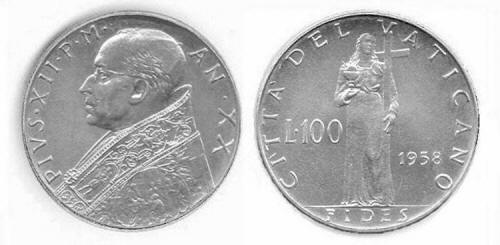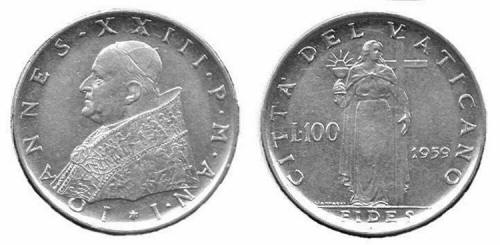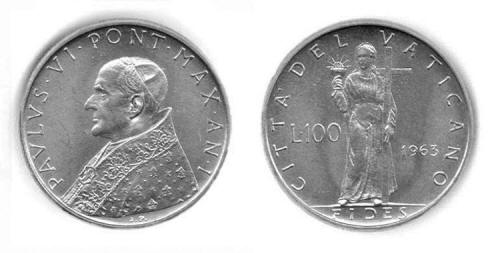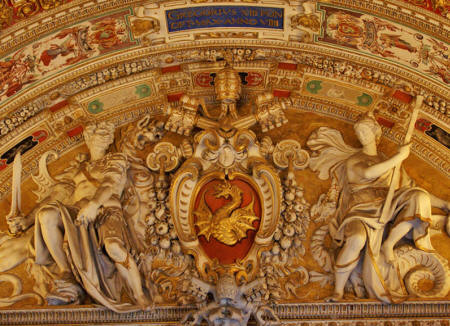from QuoFataFerunt Website
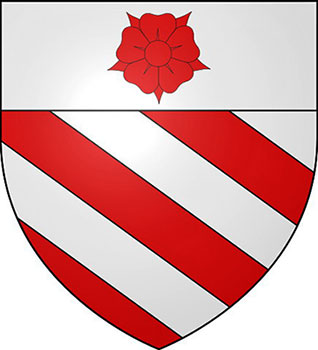
The Orsini Family
Hidden History and Genealogy
‘Orsini’ is ‘Orso’
linking in with
the long nailed growling bear
The Orsini family was one of the most celebrated princely families in medieval Italy and renaissance Rome.
Members of the Orsini include popes,
Celestine III (1191-1198)
Nicholas III (1277-1280)
Benedict XIII (1724-1730),
…and numerous condottieri and other relevant political and religious figures.
Origins
According to their family lore, the Orsini are descended from the Julio-Claudian family of ancient Rome.
This is fanciful, as well as the alleged connection to the German families of Anhalt, Baden and Rosenberg sporting the same name. The Orsini also carried on a political feud with the Colonna family until by Papal Bull it was stopped in 1511; in 1571 the Chiefs of both families married the nieces of Pope Sixtus V.
The Orsini were related to the Boboni family existing in Rome in the 11th century.
The first members had in fact always doubled surname of Boboni-Orsini. This first known members is one Bobone, in the early 11th century, father of Pietro, in turn father of Giacinto dei Boboni (1110-1198), who in 1191 became pope as Celestine III.
One of the first great nepotist popes, he created cardinals two of his nephews and allowed his cousin Giovanni Gaetano (Giangaetano, died 1232) to buy the fiefs of Vicovaro, Licenza, Roccagiovine and Nettuno, who formed the nucleus of the future territorial power of the family.
The Boboni surname went lost with his children, who were called de domo filiorum Ursi. Two of them, Napoleone and Matteo Rosso the Great (1178-1246) increased considerably the prestige of the family.
The former was the founder of the first southern line, who disappeared with Camillo Pardo in 1553. He obtained the city of Manoppello, later a countship, and was Papal gonfaloniere.
Matteo Rosso, called the Great, was the effective lord of Rome from 1241, when he defeated the Imperial troops to 1243, holding the title of Senator. Two of his sons and Napoleone were also Senators.
Matteo ousted the traditional rivals, the Colonna, from Rome and extended the Orsini territories southwards up to Avellino and northwards to Pitigliano.
During his life the family entered firmly in the Guelph party. He had some ten sons, which divided the fiefs after his deaths: Gentile (died 1246) originated the Pitigliano line and the second southern line, Rinaldo that of Monterotondo, Napoleone (died 1267) that of Bracciano and another Matteo Rosso that of Montegiordano, from the name of the district in Rome housing the family’s fortress.
The most distinguished of his sons was however Giovanni Gaetano (died 1280): elected pope as Nicholas III, he named the nephew Bertoldo (died 1289) as count of Romagna and had two nephews and a brother created cardinals.
The second southern line
The rise of the Orsini did not stop after Nicholas’ death.
Bertoldo’s son, Gentile II (1250-1318), was two times Senator of Rome, podest of Viterbo and, from 1314, Gran Giustiziere (“Great Justicer”) of the Kingdom of Naples.
He married to Clarice Ruffo, daughter of the counts of Catanzaro, forming an alliance of the most powerful Calabrian dynasty. His son Romano (1268-1327), called Romanello, was Royal Vicar of Rome in 1326, and inherited the countship of Soana through his marriage with Anastace de Montfort. Romano’s stance was markedly Guelph.
After his death, his two sons divided his fiefs, forming the Pitigliano and the second southern line.
Roberto (1295-1345), Gentile II’s elder son, married to Sibilla del Balzo, daughter of the Great Senechal of the Kingdom of Naples.
Among his sons, Giacomo (died 1379) was created cardinal by Gregory XI in 1371, while Nicola (August 27, 1331 February 14, 1399) obtained the counties of Ariano and Celano. The latter was also Senator of Rome and enlarged the family territories in Lazio and Tuscany.
His second son, Raimondello Orsini del Balzo, supported Charles III’ coup d’état in Naples against Queen Joan II.
Under king Ladislas he was among the few Neapolitan feudataries who were able to maintain their territorial power afther the royal war against them.
However, at his death in 1406 the southern Orsini fiefs were confiscated. Relationships with the royal family remained cold under Joan II; however, when Raimondello’s son Giannantonio (1386-1453) sent his troops to help her against the usurpation attempt of James of Bourbon, he received in exchange the Principality of Taranto.
The links with the court increased further under Sergianni Caracciolo, Joan’s lover and Great Senechal.
A younger brother of Giannantonio one of Sergianni’s daughters. However, the Orsini changed side when Alfonso V of Aragon started his conquest of the Kingdom of Naples. Giannantonio was awarded with the duchy of Bari, the position of Great Connestable and an appanage of 100,000 ducati. Giannantonio remained faithful to Alfonso’s heir, Ferdinand I, but was killed during a revolt of nobles.
Having died withouot legitimate sons, much of his were absorbed into the Royal Chamber.
Pitigliano line
This line was initiated by Guido Orsini, second son of Romano, who inherited the county of Soana.
He and his descendants ruled over the fiefs of Soana, Pitigliano and Nola, but in the early 15th century wars against the Republic of Siena and the Colonnas caused to lost of several territories. Bertoldo (died 1417) managed to keep only Pitigliano, while his grandson Orso (died July 5, 1479) was count of Nola and fought as condottiero under the Duke of Milan and the Republic of Venice.
Later he passed to the service of Ferdinand I of Naples, but, having not took part to the Barons’ conjure, was rewarded with the fiefs of Ascoli and Atripalda. He took part to the Aragonese campaign in Tuscany and was killed in the siege of Viterbo.
The most outstanding member of the Pitigliano line was Niccola, one of the major condottieri of the time.
His son Ludovico (died January 27, 1534) and his nephew Enrico (died 1528) took part to the Italian Wars at the service of both France and Spain, often changing side with the typical ease of the Italian military leaders of the time.
Two of Ludovico’s daughter married to relevant figures: Geronima to Pier Luigi Farnese, illegitimate son of Pope Paul III, and Marzia to Gian Giacomo Medici of Marignano, an important general of the Spanish army.
The line started to decay after the loss of Nola by Ludovico, who was also forced to accept the Senese suzerainty over Pitigliano. Under his son Giovan Francesco (died May 8, 1567) the county enter in the orbit of the Grand Duke of Tuscany.
Later, the attempt of Alessandro (died February 9, 1604) to obtain the title of Monterotondo was thwarted by Pope Gregory XIII. His son Giannantonio (March 25, 1569 – 1613) sold definitely Pitigliano to Tuscany, in exchange to the marquisate of Monte San Savino.
The line became extinct in 1640 with the death of Alessandro.
Monterotondo line
This line was founded by Rinaldo, third son of Matteo Rosso the Great.
They were often involved in the baronal struggles of the Late Middle Ages Rome, at least three members of the family being elected as Senators, while others foughts as condottieri.
Francesco in 1370 took part to the war of Florence against the Visconti of Milan. Orso (died July 24, 1424) died fighting for the king of Naples in the Battle of Zagonara against the Milanese. His sons Giacomo (died 1482) and Lorenzo (1452) battled for the Papal States, Naples and Florence. One of Giacomo’s daughters, Clarice (1453-July 30, 1488) became Lorenzo de’ Medici’s wife.
Franciotto Orsini was created cardinal by Leo X in 1517.
The most important member of the Monterotondo Orsinis was Giovani Battista Orsini, who became cardinal under Sixtus IV (1483). He was probably among the promoters of the failed plot against Cesare Borgia in 1502, being assassinated as retaliation, together with numerous members of the family.
The line decayed from the late 16th century, when several members were assassinated or lost their lands for various reasons.
Its last representatives Enrico (died September 12, 1643) and Francesco (1592 – September 21, 1650) sold Monterotondo to the Barberini in 1641.
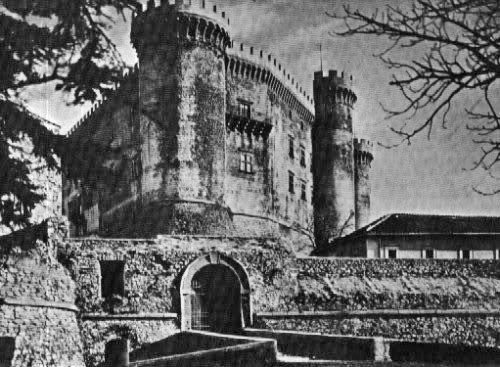
The Tower of Raimondello Orsini
in Taranto, c. 1880.
Bracciano line
Napoleone, another son of Matteo Rosso the Great, received Bracciano, Nerola and other lands in what is now northern Lazio.
In 1259 he was Senator of Rome. Thanks to the strategic positions of their fiefs, and to their famous castle built in Bracciano in 1426, they were the most powerful Orsini line in the Lazio.
Count Carlo (died after 1485), son of another Napoleone (died October 3, 1480), was Papal Gonfaloniere.
By his marriage with a Francesca Orsini of Monterotondo was born Gentile Virginio Orsini, one of the most relevant figures of Italian politics in the late 15th century. After Carlo’s death, he enlarged the family’s tenure with lands inherited by his wife, another Orsini from Salerno, and most of all he was amongst the favorites of Ferdinand I of Naples, who appointed him as Great Connestable of Naples.
Together with his cousin, the Cardinal Giovanni Battista, he was among the fiercest opposers of popes Innocent VIII and Alexander VI. In 1492 Gentile Virginio bought the county of Anguillara from Franceschetto Cybo.
During Charles VIII of France’s descent into Italy, he managed to keep Bracciano by fighting without too much dogging against him. Ferdinand II had his fiefs confiscated and imprisoned him in Castel dell’Ovo, where he was poisoned in 1497.
The family recovered this setback under the more friendly Medici popes of the early 16th century. His son Giangiordano was Prince Assistant to the Papal Throne. His son Virginio was a famous admiral for the Papal States and France, but in 1539 he had his fiefs confiscated under the charge of treason.
Paolo Giordano was created first Duke of Bracciano in 1560. An accomplished condottiero, he was however also a ruthless figure who had his wife Isabella de’ Medici murdered. For this and other homicides he had to flee to northern Italy.
He was succeeded by Virginio, whose heir Paolo Giordano II married the princess of Piombino and was created Prince of the Holy Roman Empire.
His brother Alessandro was cardinal and Papal legate, and another brother, Ferdinando (died March 4, 1660) acquired the assets of the other line of San Gemini. In the 17th century the Dukes of Bracciano moved their residence to Rome.
This, along with a general economical decadence, damaged the dukedom, and last Duke and Prince, Flavio (March 4, 1620 ? April 5, 1698) was forced by the huge debts to sell it to the Odescalchi and others.
Gravina line
The line of Gravina, from the name of the eponymous city in Apulia, is the only existing line of the Orsini.
It descends from Francesco (died 1456), a son of Count Carlo of Bracciano. Most of his fief were located in northern Lazio, but he entered in the Neapolitan orbit when in 1418 he was called by Sergianni Caracciolo to fight against the Angevine troops, which he defeated.
By marriage, he obtained the title of count of Gravina. He was made Duke of Gravina by King Alfonso, title definitely assigned to his son Giacomo (died 1472), to which had been added the counties of Conversano, Campagna and Copertino.
Two of Francesco’s son, Marino (died 1471) and Giovanni Battista (died June 8, 1476), were respectively archbishop of Taranto and Grand Master of Knights of Rhodes.
The fourth duke, Francesco, was strangled by Cesare Borgia in 1503.
One of his nephews, Flavio Orsini, was created cardinal in 1565. The fifth duke, Ferdinando (died December 6, 1549) had all his fiefs confiscated by the Spaniards, but regained it after a 40,000 scudi payment.
After the heirless death of Duke Michele Antonio (January 26, 1627), his lands passed to his cousin Pietro Orsini, count of Muro Lucano (died 1641). The latter’s nephew Pier Francesco, who had renounced to the succession in favour to his brother Domenico to became a Dominican, was later elected pope with the name of Benedict XIII.
His successor raised Benedict XIII’s nephew, Prince Beroaldo Orsini, to the dignity of Prince Assistants to the Papal Throne (title held until 1958), after the emperor Charles VI had already, in 1724, made him a prince of the Holy Roman Empire. The last cardinal from the family was Domenico.
The family moved to Rome in the 18th century, where Duke Domenico (November 23, 1790 ? April 28, 1874), married Maria Luisa Torlonia in 1823. In 1850 he was Minister of War and General Lieutenant of the Papal Armies, and Senator of Rome as well.
The descendants of the family live in Rome, Torino, Singapore and in the United States. In the US there are a few people with the last name Orazine, the name was changed when family members emigrated to the United States due to translation difficulties.
Many members of the bloodline reside on the East coast of the United States and some still maintain the proper Orsini name.
Notable buildings
Apart the Bracciano castle, other notable buildings and structures associated with the Orsini include:
The Bomarzo Garden, a Late Renaissance-Mannerist gallery of bizarre sculptures and architecture commissioned in the 16th century by Vicino Orsini. It includes also a palace, designed by Baldassarre Peruzzi, begun in 1525 by Gian Corrado Orsini and finished by his son Vicino.
The Orsini Palace in Rome, including the Theatre of Marcellus.
Palazzo Orsini Pio Righetti, also in Rome.
Orsini Castles in:
Avezzano
Nerola
Sant’Angelo Romano (15th century)
Soriano nel Cimino (built by Nicholas III in 1278)
Vasanello (12th century)
Sources – Rendina, Claudio (2004). Le grandi famiglie di Roma. Rome: Newton Compton.
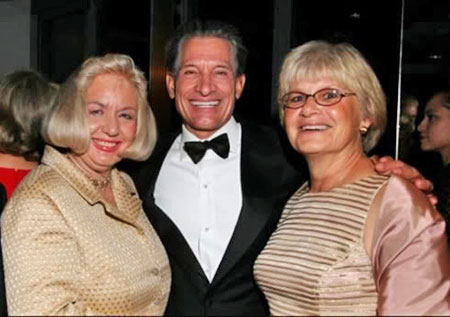
Toni Orsini
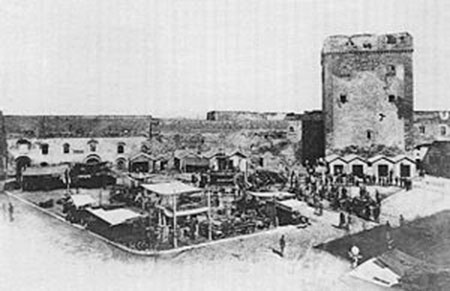
The Tower of Raimondello Orsini
in Taranto, c. 1880.
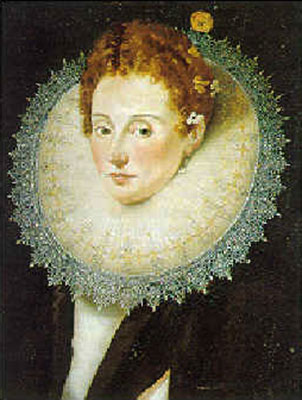
Gerolama Orsini, Pier Luigi’s wife.
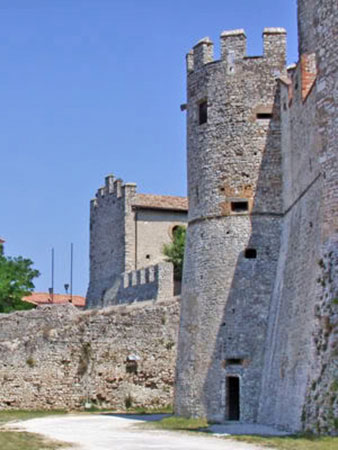
The Orsini Castle in Nerola.

Clarice Orsini of Jacopo.
Who later married Lorenzo de Medici
Pepe Orsini
Pepe Orsini of the Roman Maximus Clan.
He is the Grey Pope and is the King of the Holy Roman Papal Bloodlines. Above the Rothschilds and Rockefellers but in line and of equal stature to the Breakspear, Aldobrandini, and other Papal Bloodlines…
Knight of Malta, Tom Cruise donates to the Optimum Population Trust of Manchester, England. He and his father are major depopulationists. Both are tied to the Papal bloodline Orsini family a most powerful family in complete control of the conspiracy. Pepe Orsini is the grey Pope working with his Black Pope in his Society Of Jesus.
The Orsini (Maximus/Orso) family are the Zoroastrianist shadow hierarchy of the Jesuit Order.
The “Illuminati” is only one of the six current heads that make up “the Beast” and there is a head to that beast… a woman who rides that beast, the evil Queen Hephzibah (the matriarch who is said to be the reincarnation of Semaramis).
You will never read any article about her, she is a Nephilim hybrid; a great granddaughter of Lucifer himself, and she is the Mother of the Anti-Christ, and the queen, the Pindar, and others are all afraid of her.
As this previous poster has said, yes there are others that you never hear about and that all information is destroyed before that it can get out. I could not give this information out if I wasn’t one who is feared by the elite myself. The real people in charge, you have never heard of them.
People take note and remember…
Outer Doctrine = What They allow out to Us or allow Us to know even if it is supposedly Back Channel – COSMIC Level Info.
Inner Doctrine = The way it really is and this is only known between Them.
i.e.,
Us = Father / Son / Spirit.
Them = Father / Mother / Son.
Names have Power over, or in relation to, those Beings being called by PROPER Name. For this reason and this reason alone – The Names We commonly know Them by in the Main Stream are merely monikers of much Older and more Powerful Names.
i.e.,
Innana > Isis > Diana.
Marduk > Ra Marduk, Amen Ra, Ra.
The Original Names are for the most part only known to Them, and believe me – That’s a very select group..
The Real 13 Zoroastrian Bloodlines of The Illuminati
Ptolemaic Papal bloodlines:
Orsini
Breakspear
Aldobrandini
Farnese
Somaglia
All controlled through the Jesuit Order and their Knights of Malta & Teutonic Knights all based in missile protected Borgo Santo Spirito in Rome.
Pepe Orsini – Italy
Henry Breakspear – Macau, China
This is the true power finally.
This is the Guelph and the Ghibelline power over mankind.
The Cecil family were controlled by the powerful Jesuit family known as the Pallavicini.
Maria Camilla Pallavicini is far more powerful than Queen Elizabeth II.
The Queen and Prince Philip are totally subordinate to the Papal Bloodline the Breakspear Family and their Jesuit UKHQ at 114 Mount Street.
Please go and study who funded Elizabeth I that astronomical amount of money to fight the Spanish, yes Pallavicini.
The most powerful man right now in the conspiracy over this World is a Roman by the name of PEPE ORSINI of the powerful Roman Papal Bloodline the Orsini also known as Orso and the ancient Maximus family.
There is no one more powerful than this figure who is really the Grey Pope.
The Papal Bloodlines are the secret shadow hierarchy of the Jesuit Order even behind the Black Pope touted at the #1.
These powerful bloodlines are the,
Breakspear
Somaglia
Orsini
Farnese
Aldobrandini
You’ll notice David Rothschild marrying into the Aldobrandini with the pretty, Princess Olimpia Aldobrandini.
Another real head of this is Henry Breakspear who resides now in Macau in China. Many of the Papal Bloodline heads now live in Asia and India. What does that tell you?
The current Black Pope, Adolfo Nicholas was bought forward for the position due to the Jesuits bringing about of Asia as the next power player of the agenda. Both this Black Pope and the white Pope aren’t of Papal Bloodline, they are both commoners.
I’ve named the most powerful families on the planet. I’ve named the Grey Pope the one in-between the white and black but unseen.
Saturnalian Brotherhood – The Real 13 Zoroastrian Bloodlines of the Illuminati
House of Borja
House of Breakspeare
House of Somaglia
House of Orsini
House of Conti
House of Chigi
House of Colonna
House of Farnese
House of Medici
House of Gaetani
House of Pamphili
House of Este
House of Aldobrandini
These Egyptian Ptolemaic Dynasty Rulers are in Full Control of the,
Company of Jesus
High Grey Council of Ten
the Black Pope
This is some good info on the Black Pope:
The ‘Black Pope’, Superior Jesuit General (The President of the World), speaks at Loyola ‘Military Fortress’ University in his un-ratified 14th Amendment ‘Little Rome’ D.C United States Corporation.
A corporation under International Maritime Admiralty Law (Uniform Commercial Code) based upon Vatican Canon Law and perfected by the Roman Empire.
He lies about his power, he’s over the Pope as of 1814. He only serves and works with the shadow Jesuits being the Papal Bloodline Orsini’s, Breakspear’s, Aldobrandini’s, Farnese’s, Somalgia’s.
Adolfo is not of Papal Bloodline, some Black Pope’s have been.
The next in power beneath the Jesuits is the Bourbon, King Juan Carlos of Spain. The Roman Monarch of the World, The King of Jerusalem and SMOM Military Navigator.
This is the true World’s power system right now. Adolfo serves as a military General protecting the Zoroathrianism and Mithraism mystery schools. The Jesuits were created by the Papal Bloodline Farnese during the reign of Farnese Pope Paul III.
Loyola was commissioned by Alessandro Cardinal Farnese.
The Borgia crime family created the Jesuits!
After the terrible reign of Pope Alexander VI, the Romans were disgusted with the Spanish and vowed that there would never be another Spanish Pope.
This animosity toward the Spanish was further aggravated by the Sack of Rome in 1527 in order to prevent the divorce of Henry VIII from Catherine of Aragon.
The Borgia answer to this Spanish animosity was the creation of the order of Jesuits – a quasi religious/military strike force whose members were totally dedicated to their Spanish leader who bore the military title of general.
Like the White Pope, the general is elected for life and the Jesuit dynasty is a parallel or pseudo Papacy… Of course, the general is content to run the show from behind the scenes so as not to arouse the age-old Italian hatred for the Spanish.
The Jesuit general is referred to as the ‘”Black” Pope at the Vatican because he always dresses in black.
The Jesuits were officially founding in 1540 by Pope Paul III. Ignatius LIEola became their first general.
Don Francis Borgia was the great-grandson of Pope Alexander VI, and co-founder of the Jesuits. On his mother’s side he was descended from King Ferdinand of Aragon.
The Spanish control the Vatican through the Jesuits.
For the past 500 years, the Spanish Inquisition has controlled the Vatican by means of the Jesuits. All the Jesuits answer to their general in Rome, and he in turn is content to run the show from behind the scenes, without any publicity or public acclaim so as not to arouse the age-old Italian hostility to the Spanish…
Vaticanus
Vaticanus then is a combination of Vatic + anus, just as Romanus is a combination of Rome + anus.
Therefore, vaticanus collis or vaticanus mons mean “the prophetic hill or mountain”, which can be rephrased as the hill or mountain of prophecy. The word Vatican is just a shortened form of the word Vaticanus, just like Claudian is a shortened form of Claudianus, as shown above.
This association of the Vatican with prophecy is even confirmed by this recent Catholic book:
Where does the word “Vatican” come from and what does it mean? The word derives from the Latin vates, which means “tellers of the future.”
This name was the name given to a hillside on the west bank of the Tiber River in Rome because daily lineups of fortunetellers used to hawk their “wares” there to passersby on the street.
In the fourteenth century, when the papacy was returned to Rome from Avignon (France), the present-day Vatican became the residence of the popes, and the word came to refer to the enclave in the middle of Rome that had become the seat of the Roman Catholic Church.
Source: Incredible Book of Vatican Facts and Papal Curiosities, by Nino Lo Bello – 1998
Here is a verse from the Latin Vulgate Bible and King James as an example of the use of vatic (emphasis is mine):
Neh 6:12
Et intellexi quod Deus non misisset eum sed quasi vaticinans locutus esset ad me et Tobia et Sanaballat conduxissent eum
And, lo, I perceived that God had not sent him; but that he pronounced this prophecy against me: for Tobiah and Sanballat had hired him.
Now, note the following coins minted in Vatican City from 1955 to 1965 under three Popes.
The inscription on the reverse side of the coin reads in Italian “CITTÁ DEL VATICANO”, which as we can now see, means City of Prophecy.
Pope Paul the 6th – 1963
Rev 17:18And the woman which thou sawest is that great city, which reigneth over the kings of the earth.
There is also a woman on the reverse side, and at her feet is her title, FIDES, which means faith. This woman is symbolic of the Roman Catholic faith, or Roman Catholic Church.
Interestingly, the word anus in Latin also means “old woman”, so Vaticanus is a combination two words that also result in The Old Woman of Prophecy, this woman being symbolic of the Catholic Church.
Above is a papal medal minted by Pius XI in 1929 to commemorate both the Lateran Treaty, which restored Papal sovereignty and made Vatican City an independent state, and the 50th jubilee of his priesthood.
The sunburst wafer of the Eucharist appears in the sky above the Lateran and St. Peter’s basilicas, over the cup of the Mass.
Here is a photo of the same symbology of the cup and wafer host of the Catholic mass, used in the window of the church Dominus Flevit on the Mount of Olives, overlooking the temple mount of Jerusalem, online at Christus Rex. Note the wavy sunburst pattern around the cup.
FIDES, the Catholic faith, holding the golden cup of the Mass, portrayed by Lorenzo Sabbatini and his assistants from 1573 -1576 on the vault of the First Sala dei Foconi, the Vatican.
Speaking about His teachings, Jesus Christ said:
Mat 9:17 Neither do men put new wine into old bottles: else the bottles break, and the wine runneth out, and the bottles perish: but they put new wine into new bottles, and both are preserved.
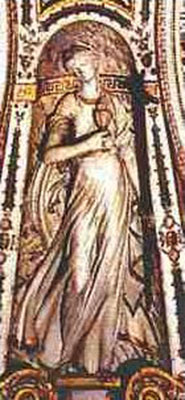
FIDES, the Catholic faith,
holding the golden cup of the Mass,
portrayed by Lorenzo Sabbatini and his assistants
from 1573 -1576
on the vault of the First Sala dei Foconi, the Vatican.
So the pure teachings of Jesus are symbolized by new wine (non-alcoholic grape juice), but the golden cup of wine in the hand of the woman of Revelation 17 is full of abominations and the filthiness of her fornication, which represent apostate doctrine, stupefying corrupted dogma, the commandments (precepts) of men, by which she has made all the nations to become drunken.
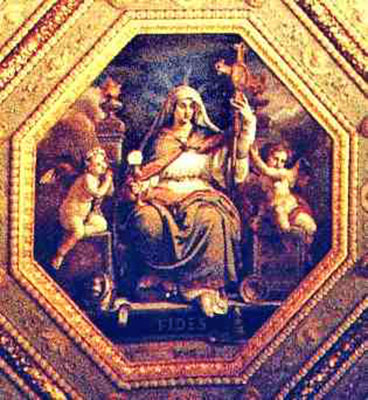
Ceiling panel painting of FIDES by Francesco Podesti,
Immaculate Conception room of the Borgia Tower, the Vatican.
Rev 17:2 With whom the kings of the earth have committed fornication, and the inhabitants of the earth have been made drunk with the wine of her fornication. …
Rev 17:4 And the woman was arrayed in purple and scarlet colour, and decked with gold and precious stones and pearls, having a golden cup in her hand full of abominations and filthiness of her fornication:
The Catholic faith is again represented in these paintings as a woman holding a golden cup of wine with the round wafer of the Eucharist.
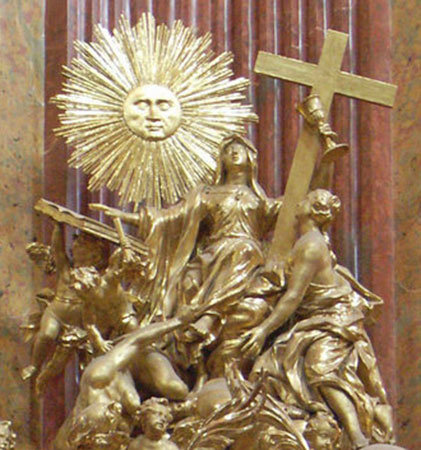
FIDES portrayed over the pulpit of the Benedictine Melk Monastery on the Danube in Austria, built in the early 18th century.
In FIDES’ left hand is the golden cup (in front of the cross), and behind her right shoulder is the pagan sunburst image.
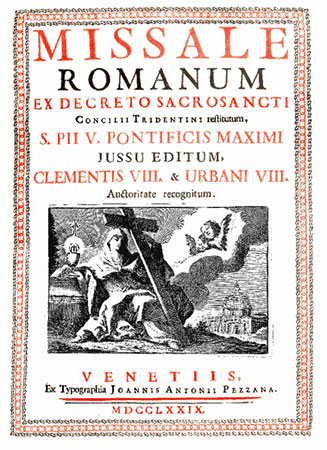
This is the title page of a Roman Catholic Missal, published in 1779, which depicts a cup-holding FIDES.
The Missal “contains the prayers said by the priest at the altar as well as all that is officially read or sung in connection with the offering of the holy Sacrifice of the Mass throughout the ecclesiastical year”, according to the Catholic Encyclopedia.
Can it be any plainer that the Catholic Church has indeed adopted the symbology of a woman holding a golden cup, precisely as described, and in fulfillment of the prophecy of Revelation 17?
Indeed, and it would seem that no other Christian denomination but the Catholic Church has depicted itself in this manner.
Papal Rome’s symbolism of FIDES apparently originated with ancient Pagan Rome. On the left is a strikingly similar Roman Denarius, with FIDES holding military standards, a common theme on coins from ancient Rome, depicting a military faithful to the reigning emperor.
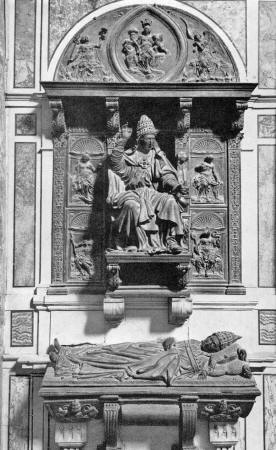
As above so below
Roma, Basilica di San Pietro in Vaticano
Here is another sculpture of FIDES, titled The Triumph of Faith over Idolatry by Théodon Jean Baptiste, in Rome’s Chiesa del Gesù, the Jesuit Church of Rome. This sculpture is on the left side of the tomb of Ignatius Loyola, the founder of the Jesuits.
Ignatius Loyola
Rev 12:3 And there appeared another wonder in heaven; and behold a great red dragon, having seven heads and ten horns, and seven crowns upon his heads.
Rev 12:4 And his tail drew the third part of the stars of heaven, and did cast them to the earth: and the dragon stood before the woman which was ready to be delivered, for to devour her child as soon as it was born.
Rev 12:9 And the great dragon was cast out, that old serpent, called the Devil, and Satan, which deceiveth the whole world: he was cast out into the earth, and his angels were cast out with him.
The above verses make clear, in even superficial reading, that the Great Red Dragon is Satan.
But there is another relationship that is not as readily apparent. Verse 4 is referring to the birth of Jesus, and Satan’s attempt to kill the infant Jesus. Satan however, did not attempt this act of murder on his own. He made his attempt through the power of one man on earth.
This man is identified:
Mat 2:13 And when they were departed, behold, the angel of the Lord appeareth to Joseph in a dream, saying, Arise, and take the young child and his mother, and flee into Egypt, and be thou there until I bring thee word: for Herod will seek the young child to destroy him.
Herod the Great, the King of Judea and Palestine was the agent Satan used in his attempt to kill the infant Jesus.
It is significant to note that Herod received his office from the Roman Empire. In 37 B.C. Herod the Great conquered Jerusalem with the aid of Roman armies and made himself king.
Now notice again in Rev 12:3 that Satan is described as having seven heads, ten horns and seven crowns.
This is important because it is a key to identify Satan and his agents elsewhere in Revelation:
Rev 13:1 And I stood upon the sand of the sea, and saw a beast rise up out of the sea, having seven heads and ten horns, and upon his horns ten crowns, and upon his heads the name of blasphemy.
Rev 13:2 And the beast which I saw was like unto a leopard, and his feet were as the feet of a bear, and his mouth as the mouth of a lion: and the dragon gave him his power, and his seat, and great authority.
Here another agent of Satan can be found.
Although nearly identical in description, it is not Satan, because verse 2 says this beast power gets his power from the dragon – a clear reference to Satan. As we observed in Matthew, Satanused the power of the ancient Roman Empire to attempt the murder of Jesus. The dragon and Rome worked with the same mind toward the same goal.
So in Rev 13:2 we can possibly substitute Rome for the word Dragon.
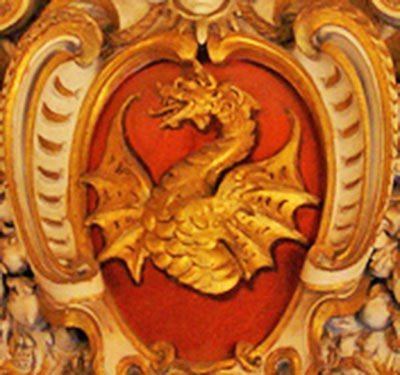
The coat of arms of Gregory XIII shown here is one of two that can be found above the doors in the Gallery of Maps in the Vatican.
Revelation 12 clearly tells us that the dragon is symbolic of Satan, so why did a pope use it as his symbol?
In 1582, by decree of Gregory XIII (Inter Gravissimas), 10 days were dropped from the calendar, and a new system of leap years was inaugurated.
Zion – Sion – Sun
For most people “Zion” is the name for Jerusalem as well as for the nation of Israel (Isis-Ra-El).
More specifically “Sion” is the name given to a hill of Judea on which the city of Jerusalem is built. In reality, the name “Zion” refers to “Sion”, meaning “Sun”.
Therefore the name “Zionism” is actually referring to the sun-cult, the Babylon cult, and f.i. relates to secret societies like the “Priore de Sion” or “Priory of Sion” (meaning: priory of the Sun”), which lost some of its secrecy because of the fact that the Rennes le Chateau mystery became so popular among certain circles.
“The Priory of Sion is a secret society created around the Merovingian bloodline (whose ancestors [it is claimed] can be traced back to the royals of Sumer, Troy and the Greek ‘Gods’) and related to the Templars as well as the Illuminati.”
It’s particularly because of the true meaning of “Zion”, that Jerusalem’s hill has been named that way.
As for the sun-cult adepts, hills symbolize the way to get closer to their God, due to the fact that at the top of them one is closer to the sun, symbolizing their God.
Hence “mount Sion” or “Sun mountain”.
The Imperial Nobility of Italy
ACEDO
H.E. Count / Graf Don Francisco Acedo Fernández Pereira ,
de jure Duke of Candia and Duke of Crete ,
Count of Dominè , Count of Bergamin ,
Count Wetter-Tegerfelden , Patrician of Naples ,
Noble of Paternò , Hidalgo of Navarre and Castille .
H.E. Count / Graf Don Manuel Santiago Acedo Fernández
Patrician of Naples , Noble of Paternò ,
Hidalgo of Navarre and Castille.
(Count of The Holy Roman Empire)
H.E. Countess / Graefin Donna Matilde Antonia Fernández del Amo
(Countess of The Holy Roman Empire)
ALBERTI DI POJA
H.E. Count / Graf Antonia Clemente Alberti di Poja .
(Count of The Holy Roman Empire)
ALDOBRANDINI
H.E. Marquis / Margrave Don Camillo Aldobrandini.
(Marquess of The Holy Roman Empire)
PRINCELY HOUSE OF ALLIATA
H.S.H. Prince / Furst Don Gabriele Alliata di Villafranca .
(Prince of The Holy Roman Empire)
PRINCELY HOUSE OF ALONZO DI ANCONA
See: Count and Baron von Reinheim and
Baron von Steffenberg, Senior line*
H.S.H. Prince / Furst Don Aaron Alonzo di Ancona ,
Duke / Herzog of Filottrano and of Monte Conero ,
Marquess / Margrave of Apiro, Count / Graf of Visso ,
Noble and Patrician of Rome and Ancona .
(Prince, Duke, Marquess and Count of The Holy Roman Empire)
H.S.H. Princess / Furstin Donna Arianna Alonzo di Ancona ,
Duchess of Filottrano and of Monte Conero ,
Marchioness of Apiro, Countess of Visso .
(Princess of The Holy Roman Empire)
H.S.H. Princess / Furstin Donna Alyssandria Alonzo di Ancona ,
Duchess of Filottrano and of Monte Conero ,
Marchioness of Apiro, Countess of Visso .
(Princess of The Holy Roman Empire)
ANTONELLI
Carlo Antonelli.
(Noble of The Holy Roman Empire)
PRINCELY HOUSE OF d’AQUINO
H.S.H. Prince / Furst Don Alessandro d’Aquino.
(Prince of The Holy Roman Empire)
ATTEMS or ATTIMIS
H.E. Count / Graf Federico Cristiano Attems.
(Count of The Holy Roman Empire)
PRINCELY HOUSE OF d’AVALOS
H.S.H. Prince / Furst Don Francesco d’Avalos.
(Prince of The Holy Roman Empire)
AVENTI
Luciano Aventi.
(Noble of The Holy Roman Empire)
BARBASETTI DI PRUN
Giangiorgio Barbasetti di Prun.
(Noble of The Holy Roman Empire)
BARBIANNO DI BELGIOIOSO D’ESTE
H.S.H. Prince / Furst Barbianno di Belgioioso D’Este .
(Prince of The Holy Roman Empire)
BARBIANNO DI BELGIOIOSO
H.E. Count / Graf Guido Barbianno di Belgioioso.
(Count of The Holy Roman Empire)
BENVENUTI
H.E. Count / Graf Ferrante Mercurino Benvenuti.
(Count of The Holy Roman Empire)
BERTOLINI
Luigi Bertolini.
(Noble of The Holy Roman Empire)
BLANCHETTI REVELLI
Lanfranco Blanchetti Revelli.
(Noble of The Holy Roman Empire)
BONACOSSI
Knight / Ritter Bonacolsa Bonacossi.
(Knight of The Holy Roman Empire)
PRINCELY HOUSE OF BONCOMPAGNI LUDOVISI
H.S.H. Prince / Furst Don Nicolo Francesco Boncompagni Ludovisi.
(Prince of The Holy Roman Empire)
PRINCELY HOUSE OF BONIFAZI DI STATTE
H.R.H. Giancarlo Bonfazi di Statte
de jure Prince of Tournai ,
Count of The Holy Roman Empire ,
Count of Statte, Baron of Ardgour .
(Count of The Holy Romann Empire)
H.R.H. Simona Bonfazi di Statte
de jure Princess of Tournai ,
Countess of The Holy Roman Empire ,
Countess of Statte, Baroness of Ardgour .
(Countess of The Holy Romann Empire)
BOSSI FEDIGROTTI
H.E. Count / Graf Frederico Bossi Fedigrotti.
(Count of The Holy Roman Empire)
BRAGADIN
Marco Alvise Bragadin.
(Noble of The Holy Roman Empire)
BUFFA
H.E. Baron / Freiherr Guido Buffa.
(Baron of The Holy Roman Empire)
CAPPONI
H.E. Count / Graf Neri Capponi.
(Count of The Holy Roman Empire)
PRINCELY HOUSE OF CARACCIOLO
H.S.H. Prince / Furst Don Francesco Caracciolo.
(Prince of The Holy Roman Empire)
PRINCELY HOUSE OF CARAFA DELLA SPINA
H.S.H. Prince / Furst Don Gregorio Carafa Della Spina.
(Prince of The Holy Roman Empire)
COMPAGNINO
H.E. Baron / Freiherr Giuseppe Compagnino .
(Baron of The Holy Roman Empire)
CASTELBARCO ALBANI VISCONTI SIMONETTA
H.E. Count / Furst Carlo Castelbarco Albani Visconti Simonetta.
(Count of The Holy Roman Empire)
CASTRACANE DEGLI ANTELMINELLI
H.E. Count / Furst Castracane Degli Antelminelli.
(Count of The Holy Roman Empire)
COZZARELLI
Lady / Frau Lucrecia Herrera Cozzarelli.
(Noble of The Holy Roman Empire)
PRINCELY HOUSE OF CHIGI ALBANI DELLA ROVERE
H.S.H. Prince / Furst Don Agostino Chigi Albani Della Rovere.
(Prince of The Holy Roman Empire)
CIGALA
H.E. Count / Graf Oscar Cigala.
(Count of The Holy Roman Empire)
CLARICINI DI DORNPACHER
Raimondo Claricini di Dornpacher.
(Noble of The Holy Roman Empire)
D’ANTONINICH / BARONY VON DEM CHERSO
(House of Steinhurst von der Steinhorst, (*Senior line)
See: Princely County and Barony von der Steinhorst,
Barony of Dromcummer , *Senior Line .
Kingdom of Westphalia, Prince Electorship of Westphalia
Principality of Fulda, Marquisate of Auvergne, *Cadet Line .
H.Ill.H. Count / Graf Nelson Keith Steinhurst von der Steinhorst ,
Baron / Freiherr von dem Cherso .
(Baron of The Holy Roman Empire)
H.Ill.H. Countess / Graefin Diana Elaine Antoninich-Steinhurst von der Steinhorst ,
Baroness / Freifrau von dem Cherso .
(Baroness of The Holy Roman Empire)
H.R.H. Prince Keith Patrick Steinhurst of Westphalia ,
Baron / Freiherr von dem Cherso .
(See: Kingdom of Westphalia, *Cadet Line)
(Baron of The Holy Roman Empire)
H.Ill.H. Countess / Graefin Joanna Nicole Steinhurst von der Steinhorst ,
Baroness / Freifrau von dem Cherso .
(Baroness of The Holy Roman Empire)
di COLLALTO
H.E. Count / Graf Giovanni di Collalto.
(Count of The Holy Roman Empire)
COLLOREDO MELS
H.E. Count / Graf Antonio Vicardo Colloredo Mels.
(Count of The Holy Roman Empire)
COZZARELLI
Lady / Frau Lucrecia Cozzarelli.
(Noble of The Holy Roman Empire)
de CONTI
H.E. Countess / Graefin Gisella de Conti.
(Countess of The Holy Roman Empire)
DI GERASA
H.E. Count / Graf Kyrill di Gerasa ,
Conte di Gerasa , Bishop of Aurora and Illinois .
(Count of The Holy Roman Empire)
PRINCELY HOUSE OF DORIA PAMPHILJ LANDJ
H.S.H. Don Prince / Furst Jonathan Paul Andrea Doria Pamphilj Landj .
(Prince of The Holy Roman Empire)
DORIA
H.E. Marquess / Margrave Giorgio Doria ,
Count / Graf of Montaldeo .
(Marquess of The Holy Roman Empire)
KINGDOM OF ETRURIA IN THE HOLY ROMAN EMPIRE
(The Royal House of Johnson,*Senior Line)
(See: Duchy of Florence and Principality of Santa Croce)
H.R.H. Prince Ralph of Etruria,
Duke of Florence, de jure King of Etruria,
Imperial Vice-Chancellor of Italy .
(Kingdom in the Holy Roman Empire)
H.R.H. Princess Marianne of Etruria,
Duchess of Florence, de jure Queen of Etruria.
(Kingdom in the Holy Roman Empire)
H.R.H. Prince Rutherford of Etruria ,
Hereditary Prince of Etruria,
Duke of Florence.
(Kingdom in the Holy Roman Empire)
FIORIO
H.E. Baron / Freiherr Carlo Fiorio.
(Baron of The Holy Roman Empire)
DUCHY OF FLORENCE
(The Royal House of Johnson,*Senior Line)
(See: Kingdom of Etruria and Principality of Santa Croce)
H.R.H. Prince Ralph of Etruria,
Duke / Herzog of Florence ,
(Duke of The Holy Roman Empire)
H.R.H. Princess Marianne of Etruria,
Duchess / Herzogin of Florence ,
(Duchess of The Holy Roman Empire)
H.R.H. Prince Rutherford of Etruria ,
Hereditary Duke / Herzog of Florence ,
(Duke of The Holy Roman Empire)
SCIORTINO
H.E. Count / Graf Antonio Sciortino .
(Count of The Holy Roman Empire)
FRANCHINI STAPPO
Piero Alessandro Franchini Stappo.
(Noble of The Holy Roman Empire)
dalla FRATTA PASINI
H.E. Count / Graf Alessandro dalla Fratta Pasini.
(Count of The Holy Roman Empire)
della GHERARDESCA
H.E. Count / Graf Walfredo della Gherardesca.
(Count of The Holy Roman Empire)
GIOVANELLI
H.E. Count / Graf Don Alberto Carlo Giovanelli.
(Count of The Holy Roman Empire)
PRINCELY HOUSE OF GONZAGA
H.S.H. Prince / Furst Don Maurizio Gonzage.
(Prince of The Holy Roman Empire)
GRAMATICA
Giovanni Gramatica.
(Noble of The Holy Roman Empire)
GROPPLERO DI TROPPENBURG
Knight / Ritter Gian Andrea Gropplero di Troppenburg.
(Knight of The Holy Roman Empire)
PRINCELY HOUSE OF GUASCO GALLARATE or GALLARATI
H.S.H. Prince / Furst Don Francesco Guasco Gallarate.
(Prince of The Holy Roman Empire)
GUIDOBONO CAVALCHINI GAROFOLI
H.E. Baron / Freiherr Giuseppe Guidobono Cavalchini Garofoli.
(Baron of The Holy Roman Empire)
PRINCELY HOUSE OF HERCOLANI
H.H. Prince / Furst Don Andre Hercolani.
(Prince of The Holy Roman Empire)
IMPELLIZZERI
H.E. Baron / Freiherr Vincenzo Impellizzeri.
(Baron Of The Holy Roman Empire)
PRINCELY HOUSE OF LANDI
H.S.H. Prince / Furst Landi of Valditaro ,
Prince of Valditaro .
(Prince of The Holy Roman Empire)
PRINCE ELECTORSHIP OF LOMBARDY
His Imperial and Royal Highness
Prince Karl Friedrich of Germany ,
Imperial Prince Elector of Lombardy ,
Duke and Prince of Lombardy ,
de jure King of Lombardy .
(Prince Elector of The Holy Roman Empire)
KINGDOM OF ITALY / LOMBARDY
H.I.&.R.H. Prinz Karl Friedrich von Deutschland,
Herzog von Swabia , Herzog von Saxe-Altenburg ,
de jure Charles VIII I.R. ,
de jure King of Italy / Lombardy.
(King in The Holy Roman Empire)
DUCHY OF LOMBARDY
H.I.&.R.H. Prinz Karl Friedrich von Deutschland,
Herzog von Swabia, Herzog von Saxe-Altenburg,
de jure Charles VIII I.R.
Duke / Herzog of Lombardy.
(Duke of The Holy Roman Empire)
PRINCIPALITY OF LOMBARDY
H.I.&.R.H. Prinz Karl Friedrich von Deutschland,
Herzog von Swabia, Herzog von Saxe-Altenburg,
de jure Charles VIII I.R.
Prince / Furst of Lombardy.
(Prince of The Holy Roman Empire)
DUCHY OF LUCCA
Reverts back to the Imperial Crown.
Duke / Herzog of Lucca.
(Duke of The Holy Roman Empire)
LUPIS MACEDONIO PALERMO
H.E. Marquis Don Marco Lupis Macedonio Palermo,
13th Duke of San Donato, 12th Duke of Grottolelle,
14th Marquis of Tortora, 11th Marquis of Ruggiano,
10th Marquis of Oliveto, 8th Marquis of Capriglia,
Count / Graf and Knight / Ritter of the Holy Roman Empire .
(Count and Knight of The Holy Roman Empire)
MACH DI PALMSTEIN
Gianfranco Mach Di Palmstein.
(Noble of The Holy Roman Empire)
MARESCA
H.E. Marquis / Margrave Antonio Maresca .
(Marquis of The Holy Roman Empire)
MARULLI DI SAN CESARIO
H.S.H. Prince / Furst Marulli Di San Cesario .
(Prince of The Holy Roman Empire)
MARULLI
H.E. Count / Graf Marulli.
(Count of The Holy Roman Empire)
DUCAL HOUSE OF MASSA AND CARRARA
H.S.H. Don John Malcolm James Cracknell,
Duke and Marquis of Massa and Carrara.
(Duke and Marquis of The Holy Roman Empire)
SOVEREIGN DUCHY OF MODENA
Reverted back to the Imperial Crown and Emperor,
Duke of / Herzog von Modena.
(Sovereign Duchy of The Holy Roman Empire)
PRINCIPALITY DI SANTA CROCE
(The Royal House of Johnson,*Senior Line)
(See: Kingdom of Etruria and Duchy of Florence)
H.R.H. Prince Ralph of Etruria,
Prince di Santa Croce, Prince del Monte Titano ,
Duke di Santa Croce , Duke del Monte Titano,
Marquis del Monte Titano , Count of Valais ,
Count del Monte Titano , Count and Baron Johnson ,
Reichsritter of The Holy Roman Empire ,
Noble of Rome and Patrician of Rome .
(Prince of The Holy Roman Empire)
H.R.H. Princess Marianne of Etruria,
Princess di Santa Croce, Princess del Monte Titano ,
Duchess di Santa Croce , Duchess del Monte Titano,
Marchioness del Monte Titano , Countess of Valais ,
Countess del Monte Titano , Countess and Baroness Johnson
(Princess of The Holy Roman Empire)
H.R.H. Prince Rutherford of Etruria ,
Hereditary Prince di Santa Croce ,
Duke del Monte Titano, Marquis del Monte Titano .
(Prince of The Holy Roman Empire)
HOUSE OF JOHNSON DI SANTA CROCE
(*Cadet Line)
H.E. Count / Graf Charles Daniel II Johnson di Santa Croce ,
Baron / Freiherr di Santa Croce .
(Count and Baron of The Holy Roman Empire)
H.E. Countess / Graefin Rebecca Johnson di Santa Croce ,
Baroness / Freifrau di Santa Croce ,
(Countess and Baroness of The Holy Roman Empire)
H.E. Count / Graf Charles Daniel III Johnson di Santa Croce ,
Baron / Freiherr di Santa Croce .
(Count and Baron of The Holy Roman Empire)
H.E. Countess / Graefin Jennifer Johnson di Santa Croce ,
Baroness / Freifrau di Santa Croce , (Mrs. Anderson).
(Countess and Baroness of The Holy Roman Empire)
H.E. Count / Graf Andrew Johnson di Santa Croce ,
Baron / Freiherr di Santa Croce
(Count and Baron of The Holy Roman Empire)
PRINCELY HOUSE OF MELI LUPI
H.S.H. Prince / Furst Don Bonifazio Meli Lupi.
(Prince of The Holy Roman Empire)
DUCHY OF MILAN
Part of the Imperial Patrimony of the Emperor.
Duke of / Herzog von Milan.
(Duke of The Holy Roman Empire)
PRINCELY HOUSE OF MILANO D’ARAGONA
H.S.H. Prince / Furst Don Pietro Milano Franco D’Aragona.
(Prince of The Holy Roman Empire)
MISTRUZZI DI FRISINGA
Francesco Milano di Frisinga.
(Noble of The Holy Roman Empire)
DUCHY AND COUNTY OF FRIULI
Part of the Imperial Patrimony of the Emperor.
Duke / Herzog and Count / Graf of Friuli.
(Duke and Count of The Holy Roman Empire)
MONTECUCCOLI DEGLI ERRI
H.E. Count / Graf Montecuccoli Degli Erri.
(Count of The Holy Roman Empire)
MONTECUCCOLI-LADERCHI
H.E. Count / Graf Montecuccoli-Laderchi.
(Count of The Holy Roman Empire)
DUCHY OF NAPLES
Part of the Imperial Patrimony of the Emperor.
Duke / Herzog of Naples.
(Duchy of The Holy Roman Empire)
PRINCELY HOUSE OF ODESCALCHI
H.S.H. Prince / Furst Don Ladislao Odescalchi.
(Prince of The Holy Roman Empire)
PRINCELY HOUSE OF ORSINI
H.S.H. Prince / Furst Heinrich von Orsini und Rosenberg.
(Prince of The Holy Roman Empire)
PRINCELY HOUSE OF PALLAVICINI
H.S.H. Prince / Furst Don Giulio Pallavicini.
(Prince of The Holy Roman Empire)
H.S.H. Princess / Furstin Donna Elvina Pallavicini.
(Princess of The Holy Roman Empire)
PALLAVICINI – PALLAVICINO
H.E. Marquis / Margrave Adalberto Pallavicini.
(Marquis of The Holy Roman Empire)
PARETO SPINOLA
H.E. Marquis / Margrave Raffaele Pareto Spinola.
(Marquis of The Holy Roman Empire)
PARIBELLI
Pier Giacinto Paribelli.
(Noble of The Holy Roman Empire)
PAVAROTTI
H.E. Count / Graf Luciano Pavarotti di Modena
(Count of The Holy Roman Empire)
PECORI GIRALDI
H.E. Count / Graf Francesco Pecori Giraldi.
(Count of The Holy Roman Empire)
PIANETTI
H.E. Marquis / Margrave Bernardo Pianetti.
(Marquis of The Holy Roman Empire)
PRINCELY HOUSE OF PIGNATELLI ARAGONA CORTES
H.S.H. Prince / Furst Don Nicola Pignatelli Aragona Cortes.
(Prince of The Holy Roman Empire)
H.S.H. Prince / Furst Don Mario Pignatelli Aragona Cortes.
(Prince of The Holy Roman Empire)
PONTOGLIO-BINO
H.E. Count / Graf Alessandro Pontoglio-Bino.
(Count of The Holy Roman Empire)
PRINCELY HOUSE OF di PORCIA e BRUGNERA
H.S.H. Prince / Furst di Porcia e Brugnera.
(Prince and Count of The Holy Roman Empire)
RAGGI
Antonio Raggi.
(Noble of The Holy Roman Empire)
RAVIGNANI DE’PIACENTINI
Gianluigi Ravignani de’Piacentini.
(Noble of The Holy Roman Empire)
PRINCELY HOUSE OF ROSPIGLIOSI
H.H. Prince / Furst Don Filippo Rospigliosi.
(Prince of The Holy Roman Empire)
SARCHI
H.E. Count / Graf Auselmo Sarchi.
(Count of The Holy Roman Empire)
SAIBANTE
Ugo Vittorio.
(Noble of The Holy Roman Empire)
SALVADORI DI WIESENHOF
H.E. Baron / Freiherr Vittorio Emanuele Salvadori di Wiesenhof.
(Baron of The Holy Roman Empire)
KINGDOM OF ITALY / ROYAL HOUSE OF SAVOY
H.R.H. Prince Vittoria Emanuele of Savoy, Prince of Naples .
(Prince of The Holy Roman Empire)
H.R.H. Princess Marina of Savoy, Princess of Naples .
(Princess of The Holy Roman Empire)
H.R.H. Prince Emanuele Filiberto of Savoy ,
Prince of Venice and Piedmont .
(Prince of The Holy Roman Empire)
H.R.H. Princess Clotilde Marie of Savoy ,
Princess of Venice and Piedmont .
(Princess of The Holy Roman Empire)
H.R.H. Princess Vittoria of Savoy .
(Princess of The Holy Roman Empire)
H.R.H. Princess Luisa of Savoy .
(Princess of The Holy Roman Empire)
H.R.H. Princess Maria Pia of Savoy .
(Princess of The Holy Roman Empire)
H.R.H. Princess Maria Gabriella of Savoy .
(Princess of The Holy Roman Empire)
H.R.H. Princess Maria Beatrice of Savoy .
(Princess of The Holy Roman Empire)
H.R.H. Prince Amedeo of Savoy, 5th Duke of Aosta .
(Prince of The Holy Roman Empire)
H.R.H. Priness Silvia of Savoy, Duchess of Aosta .
(Princess of The Holy Roman Empire)
H.R.H. Princess Bianca of Savoy .
(Princess of The Holy Roman Empire)
H.R.H. Prince Aimone of Savoy, Duke of Apulia .
(Prince of The Holy Roman Empire)
H.R.H. Princess Mafalda of Savoy .
(Princess of The Holy Roman Empire)
H.R.H. Princess Isabella of Savoy .
(Princess of The Holy Roman Empire)
PRINCIPALITY OF SEBORGA
H.M.S.H. Prince / Furst Giorgio I of Seborga ,
(Sovereign Prince of The Holy Roman Empire)
di SEREGO ALIGHIERI
H.E. Count / Graf Pieralvise di Serego Alighieri.
(Count of The Holy Roman Empire)
SOLARO
H.E. Count / Graf Fausto Solaro.
(Count of The Holy Roman Empire)
STANCHINA
Knight / Ritter Camillo Stanchina.
(Knight of The Holy Roman Empire)
STRASSOLDO
H.E. Count / Graf Giovan Battista Strassoldo.
(Count of The Holy Roman Empire)
TAXIS BORDOGNA VALNIGRA
H.E. Baron / Freiherr Carlos Taxis Bordogna Valnigra.
(Baron of The Holy Roman Empire)
TOMASELLA
H.E. Count / Graf Don Federico Tomasella ,
Count and Baron Tomasella , Noble of Rome.
(Count and Baron of The Holy Roman Empire)
H.E. Countess / Graefin Donna Carmen Alicia Dotti-Tomasella,
Dowager Countess and Baroness Tomasella.
(Countess and Baroness of The Holy Roman Empire)
H.R.H. Princess Alicia Gabriela of Westphalia,
(nee: H.E. Countess Donna Alicia Gabriela Tomasella)
Countess and Baroness Tomasella .
(See: The Kingdom of Westphalia).
(Countess and Baroness of The Holy Roman Empire)
MARGRAVIATE OF TUSCANY
Part of the Imperial Patrimony of the Emperor.
Margrave of Tuscany.
(Margraviate of The Holy Roman Empire)
GRAND DUCHY OF TUSCANY
H.I.&.R.H. Archduke Sigismund von Habsburg of Austria,
Prince of Tuscany, Head of the Grand Ducal House of Tuscany.
(Prince, Duke, and Count of The Holy Roman Empire)
DUCHY AND COUNTY OF TURIN
Part of the Imperial Patrimony of the Emperor.
Duke / Herzog and Count / Graf of Turin.
(Sovereign Duke and Count of The Holy Roman Empire)
VALVASONE
H.E. Count / Graf Ettore Valvasone.
(Count of The Holy Roman Empire)
dal VERME
H.E. Count / Graf Ludovico dal Verme.
(Count of The Holy Roman Empire)
MARGRAVIATE AND PRINCIPALITY OF VERONA
Part of the Imperial Patrimony of the Emperor.
Margrave and Prince / Furst of Verona.
(Margrave and Prince of The Holy Roman Empire)
WINDISCH-GRAETZ
H.E. Count / Graf Mariano Ugo Windisch-Graetz
(Count of The Holy Roman Empire)
ZORZI GIUSTINIANI
Antonio Zorzi Giustiniani.
(Noble of The Holy Roman Empire)
___
https://www.bibliotecapleyades.net/vatican/esp_vatican144.htm

